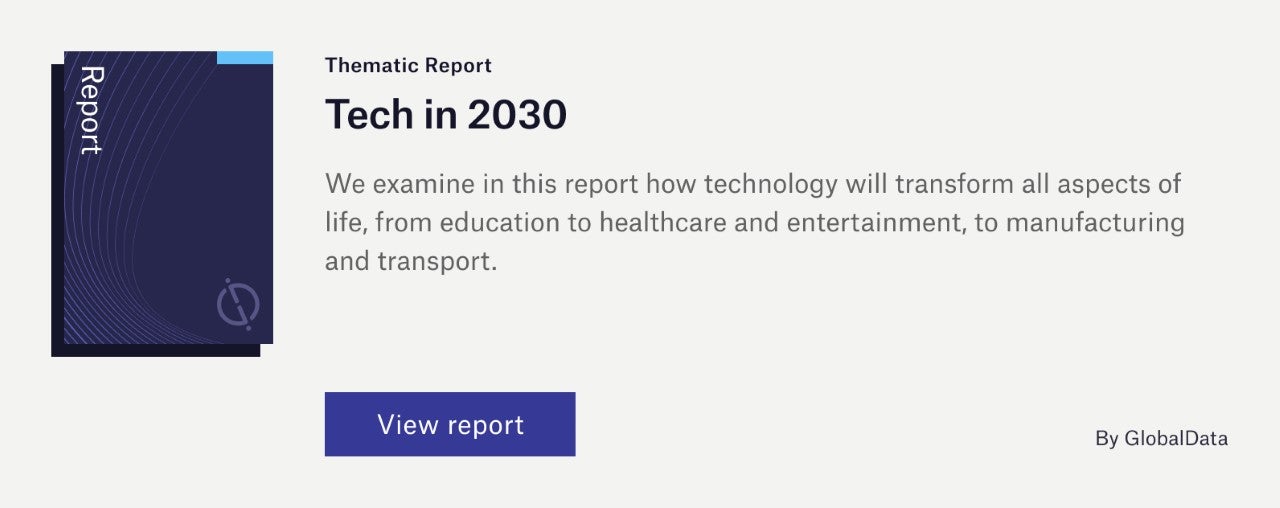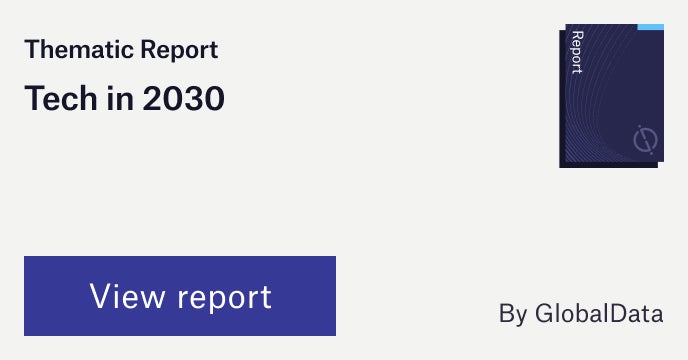The future of the tech industry will be shaped by a range of disruptive themes, with 5G being one of the themes that will have a significant impact on telecom infrastructure companies. A detailed analysis of the theme, insights into the leading companies, and their thematic and valuation scorecards are included in GlobalData’s thematic research report,5G – Thematic Intelligence. Buy the report here.

Access deeper industry intelligence
Experience unmatched clarity with a single platform that combines unique data, AI, and human expertise.
5G consists of the fifth generation of cellular technology and is built to enable faster mobile data speeds than previous 4G LTE and earlier technologies, providing the potential for revenue growth and lower customer churn. 5G will allow networks to be virtually sliced to provide a range of different service characteristics for different use cases. After years of anticipation, most of the world’s largest operators have deployed 5G networks. The year 2020 saw a growing number of 5G commercial launches worldwide, with more than 400 million 5G subscriptions active by the end of the year.
5G must be supported by mobile network operators and their infrastructure suppliers. It is also important to note that truly transformative 5G use cases will require network upgrades that extend beyond the radio portion of the network to include the mobile core and transport segments. Finally, 5G must be supported by a robust set of terminals, including smartphones, tablets, fixed wireless access points, and eventually sensors and other Internet of Things (IoT) touchpoints.
However, not all companies are equal when it comes to their capabilities and investments in the key themes that matter most to their industry. Understanding how companies are positioned and ranked in the most important themes can be a key leading indicator of their future earnings potential and relative competitive position.
According to GlobalData’s thematic research report, 5G, leading adopters include: Nokia, Ericsson, Rakuten, Parallel Wireless, Mavenir, ASOCS, Radisys, Concentrix, Qualcomm, CSG Systems, Samsung Electronics and Huawei.
Insights from top ranked companies
Nokia
Nokia’s 5G ‘Future X’ network architecture includes: 5G RAN, ‘anyhaul’ transport, and 5G Cloud Packet Core (CPC) solutions designed to lower total cost of ownership (TCO) through automation and machine learning. CPC deploys cloud and web technologies while leveraging its prior packet core knowledge base to deliver a choice of deployment options. Nokia’s approach to 5G transport starts with 10GbE site connectivity as a standard and implements SDN and virtualisation across the board.
Samsung Electronics
Samsung was an early mover in 5G, launching its first 5G phone in April 2019. Samsung has one of the most robust line-ups of 5G handsets, across multiple price tiers, in terms of portfolio breadth, form factors, and technology evolution. Samsung is also aggressively championing the cause of affordable 5G, which should benefit the company in mature markets like the US, where cheaper phones are being used to jumpstart mainstream 5G adoption. Challenges come from China, where Samsung has a negligible presence due to its high phone prices, and where homegrown Huawei leads in 5G. But Samsung will benefit from its strong position in Europe as Huawei struggles to sell phones due to a lack of Google’s services. From a network infrastructure perspective, Samsung’s early emphasis was on supplying 5G early adopters in its homeland of South Korea and early 5G rollouts, including for FWA, in the US. Its radio portfolio isn’t especially broad or well-distinguished, but its high base station capacity can help operators stay ahead of 5G network traffic increases. Meanwhile, its partnership with HPE shows Samsung aims to leverage cloud RAN disruption to gain share. Its 2020 acquisition of TeleWorld Solutions showed Samsung trying to bolster its professional services operations, an area where its peers have traditionally overshadowed it.
Qualcomm
Qualcomm has been an early and aggressive champion of 5G. The chip company has already signed off on long-term deals with all leading smartphone original equipment manufacturers (OEMs), including Apple, and its licensing segment now boasts more than 100 5G licenses. It has also introduced platforms and solutions to expand 5G beyond the smartphone to automotive, PCs, AR and VR, fixed wireless and equipment and infrastructure software.
To further understand the key themes and technologies disrupting the technology industry, access GlobalData’s latest thematic research report on 5G.
- Broadcom
- Juniper Networks
- Huawei
- Amdocs
- Infinera
- NEC
- Ciena
- Vecima
- Calix
- Harmonic
- Telit
- Ubiquiti Networks
- Ribbon Comms
- Casa Systems
- ZTE
- Adtran
- Fujitsu
- CommScope
- InterDigital
Data Insights
From

The gold standard of business intelligence.
Blending expert knowledge with cutting-edge technology, GlobalData’s unrivalled proprietary data will enable you to decode what’s happening in your market. You can make better informed decisions and gain a future-proof advantage over your competitors.









